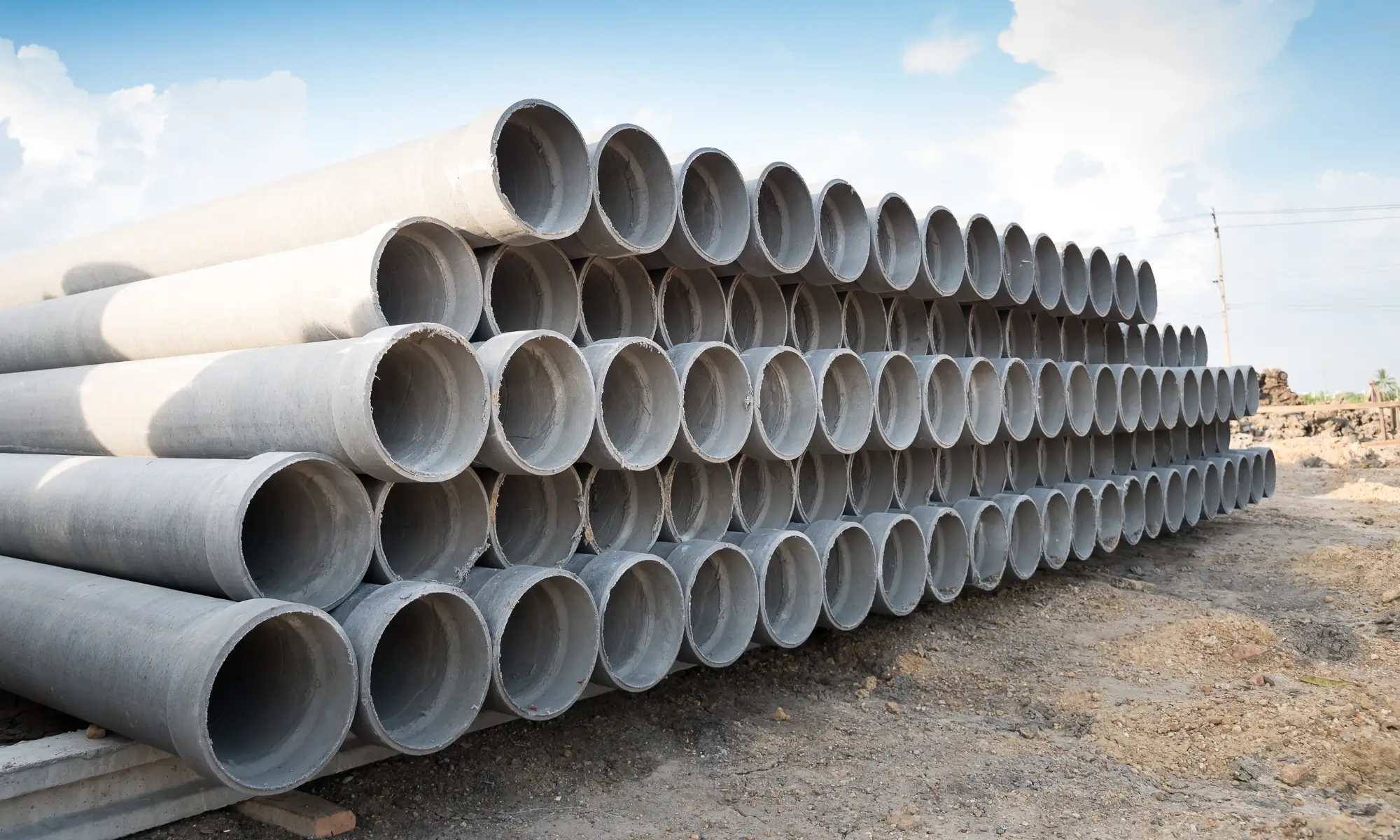Asbestos cement (AC) pipes have been a significant part of the water supply and sewage infrastructure since the early 1900s. Composed primarily of Portland cement and asbestos fibers, these pipes were favored for their durability, lightweight nature, and resistance to corrosion. However, the health risks associated with asbestos exposure have led to a decline in their use and a push for safer alternatives.
This article provides a comprehensive overview of asbestos cement pipes, their history, uses, risks, and the necessary precautions for handling them.
What are Asbestos Cement Pipes?
Asbestos cement pipes are constructed by mixing asbestos fibers with Portland cement and silica sand to create a slurry. This mixture is then deposited in layers on a cylindrical mandrel until the desired thickness is achieved. The pipes are cured using steam or water, cleaned, and the ends are machined for accurate diameter alignment. Typically, the pipes are coated with cold bitumen for added protection.
Manufacturing Process
- Mixing: Asbestos fibers are combined with cement and silica sand.
- Layering: The slurry is layered onto a mandrel to form the pipe.
- Curing: Pipes undergo steam or water curing to harden the material.
- Finishing: Ends are machined, and the pipes are coated with bitumen.
Types of Asbestos Used
- Chrysotile (White Asbestos): Most commonly used due to its heat resistance and flexibility.
- Amosite (Brown Asbestos) and Crocidolite (Blue Asbestos): Previously used but later banned due to higher health risks.
Historical Use and Popularity
Asbestos cement pipes gained popularity due to their:
- Durability: Resistant to internal and external corrosion.
- Lightweight: Easier to handle compared to metallic pipes.
- Cost-Effectiveness: More affordable, especially in countries lacking local metal resources.
- Pressure Resistance: Capable of operating under higher pressures.
By the 1940s, these pipes were extensively used for drinking water distribution, wastewater collection, and irrigation systems. They accounted for up to 20% of all distribution piping in some regions.
Health Risks Associated with Asbestos Cement Pipes
Asbestos Exposure
Asbestos fibers can become airborne when the material is disturbed, such as during cutting, drilling, or handling damaged pipes. Inhalation of these microscopic fibers poses severe health risks, including:
- Asbestosis: Scarring of lung tissue leading to breathing difficulties.
- Lung Cancer: Increased risk due to prolonged exposure.
- Mesothelioma: A rare and aggressive cancer affecting the lining of the lungs or abdomen.
No Safe Level of Exposure
There is no safe level of asbestos exposure. Even minimal inhalation can lead to long-term health issues. The risks are particularly high for workers involved in:
- Installation or removal of AC pipes.
- Cutting or drilling into the pipes.
- Handling damaged or deteriorated pipes.
Types of Asbestos Cement Pipes and Their Uses
- Pressure Pipes: Used for water supply and distribution mains.
- Sewer Pipes: Gravity and force mains for wastewater.
- Irrigation Pipes: For agricultural and landscaping purposes.
- Vent Pipes: Ventilation of gases, fumes, and dust.
- Electrical Conduits: Housing for electrical wires and cables.
- Gas Vent Pipes: Venting for gas appliances.
Corrosion and Lifespan
While asbestos cement pipes are resistant to corrosion, they are not impervious to deterioration. Factors affecting their lifespan include:
- Soil Composition: Sulphated soils can attack cement unless protected with bitumen.
- Water Leaching: Internal and external water can leach materials, weakening the pipe.
- Mechanical Stress: Brittle nature requires careful handling and proper bedding to prevent fractures.
Estimated Lifespan
- Average Lifespan: 65 to 105 years.
- Failure Rates: Increase dramatically as pipes age, often without warning.
Identifying Asbestos Cement Pipes
Visual Inspection
- Color: Typically white or light grey but may be painted.
- Texture: Look for remnants of wrapping or a fibrous appearance.
- Location: Common in older homes built before the 1980s.
Professional Assessment
If asbestos is suspected:
- Do Not Disturb: Avoid touching or attempting to remove the material.
- Asbestos Survey: Contact a qualified professional to conduct an assessment.
- Testing: Only certified laboratories can confirm the presence of asbestos.
Regulations and Bans
United Kingdom
- 1986: Production of AC pipes ceased.
- 1999: Complete ban on asbestos use.
- BS EN 512: Standards for fiber cement pipes, distinguishing between asbestos-containing and non-asbestos technologies.
United States
- 1980s: EPA issued a ban on asbestos-related products.
- Existing Pipes: Not mandated for removal but require careful management.
Global Perspective
- Many countries have ceased production due to health risks.
- Some regions continue to use AC pipes, often due to economic factors.
Safe Handling and Management
For Homeowners
- Awareness: Know if your property contains AC pipes.
- Monitoring: Regularly check for signs of damage or deterioration.
- Professional Removal: Engage licensed asbestos removal experts if necessary.
For Workers
- Protective Equipment: Use respirators and protective clothing.
- Training: Proper handling techniques to minimize fiber release.
- Legal Compliance: Follow regulations regarding asbestos management.
Alternatives to Asbestos Cement Pipes
- Ductile Iron Pipes: Strong and durable with a long lifespan.
- PVC Pipes: Lightweight and corrosion-resistant.
- HDPE Pipes: Flexible and suitable for various applications.
Conclusion
Asbestos cement pipes played a crucial role in developing modern infrastructure due to their advantageous properties. However, the health risks associated with asbestos exposure have led to global efforts to phase out these materials. Understanding the history, risks, and proper management of AC pipes is essential for public health and safety. If you suspect the presence of asbestos in your property, consult with professionals to assess and address the situation appropriately.
Frequently Asked Questions
Disclaimer: This article is intended for informational purposes only and should not be considered professional advice. Always consult with qualified professionals regarding asbestos-related concerns.

